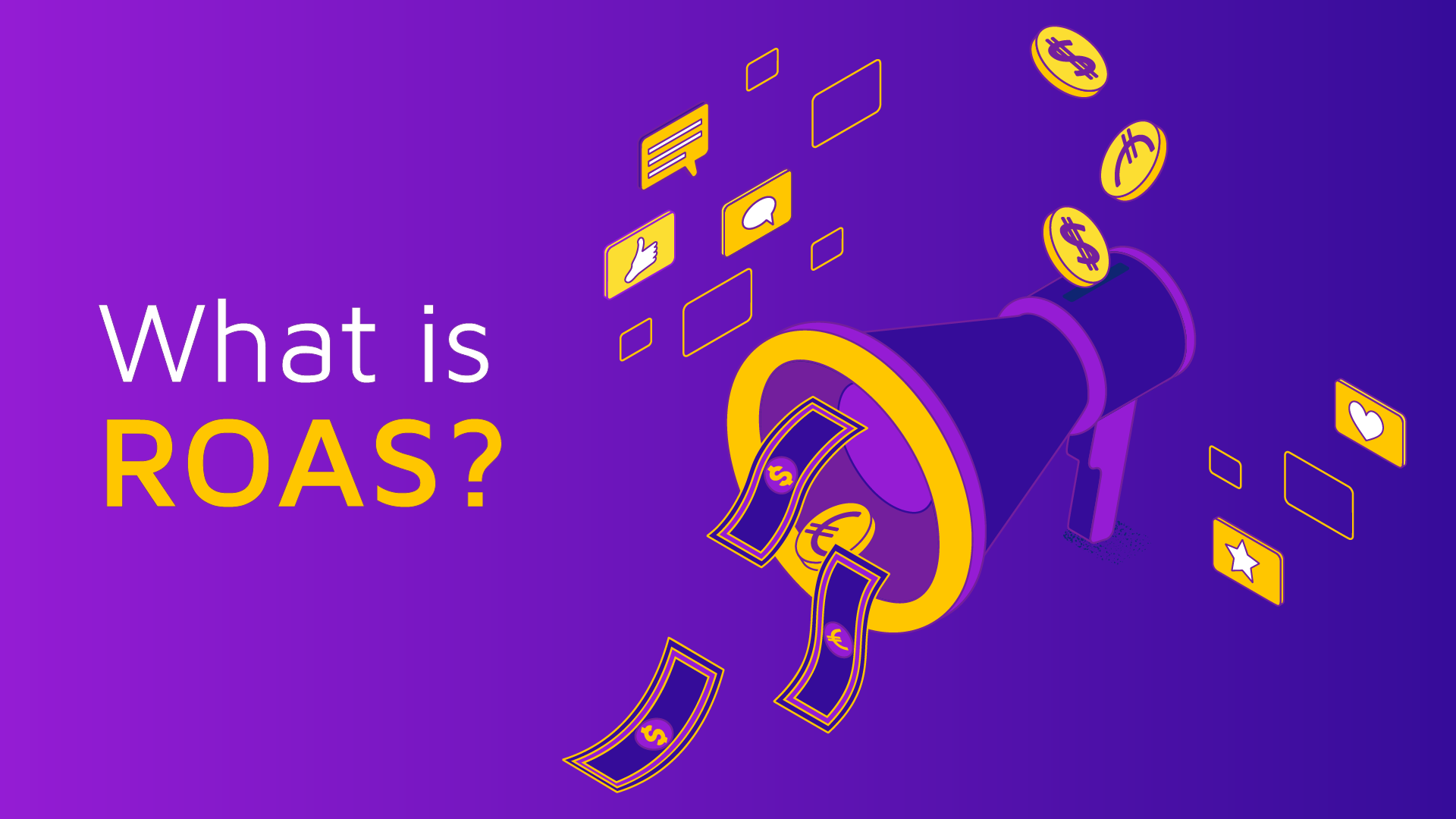What is ROAS? How to Calculate Return on Ad Spend?
In the world of advertising, the importance of checking metrics cannot be overstated. Keeping a keen eye on various performance indicators is not just a good practice, it is the most effective way to track results accurately and make data-driven decisions. Metrics provide advertisers with invaluable insights into the success of their campaigns, enabling them to gauge the impact of their marketing efforts. One of the most critical metrics in this regard is ROAS (Return on Advertising Spend).
Numbers, in advertising, serve as objective evidence of a campaign’s effectiveness and efficiency. Calculating ROAS allows advertisers to precisely determine how much revenue their ad investments are generating, ensuring they are getting the maximum return on their advertising spend.
By keeping a close watch on this metric, advertisers can identify which campaigns and strategies are delivering the best results, enabling them to optimize their budgets and focus on initiatives that yield the highest returns. In a data-centric advertising landscape, understanding and calculating ROAS has become paramount for any successful advertiser looking to thrive in a highly competitive market.
What is Return on Ad Spends?
Return on Advertising Spend (ROAS) is a fundamental metric used to measure the effectiveness and profitability of advertising campaigns. It provides advertisers with valuable insights into how much revenue is generated for every dollar spent on advertising. In simple terms, ROAS helps advertisers understand the return they are getting on their advertising investments.
What is the formula to calculate ROAS?
ROAS is calculated by dividing the total revenue generated from an advertising campaign by the total cost of that campaign and expressed as a ratio or percentage.
ROAS = Total Revenue from Advertising / Total Advertising Cost
Here’s an example of how to calculate ROAS
During their campaign, a brand spent $5,000 on ads. As a result of this campaign, it generated $25,000 in total revenue from the sales.
Now, let’s calculate the ROAS using the formula:
ROAS = $25,000 (Total Revenue) / $5,000 (Total Advertising Cost) ROAS = 5
In this example, ROAS is 5. This means that for every dollar spent on advertising, the company earned $5 in revenue. As a general rule, a ROAS greater than 1 indicates that the advertising campaign is profitable, as revenue generated is higher than the advertising costs. In this case, the ROAS of 5 indicates that the brand earned five times the amount it spent on advertising, making the campaign highly successful.
Higher ROAS values indicate better-performing campaigns, while ROAS below 1 may suggest that adjustments are needed to improve profitability. ROAS is an essential tool for advertisers seeking to make data-driven decisions and allocate their advertising budgets efficiently to achieve maximum return on their ad spends.
Why is ROAS an important metric?
Advertisers should consider ROAS (Return on Advertising Spend) as an important metric due to the numerous benefits it offers in evaluating the success of their advertising campaigns and driving business growth. Here are some compelling reasons why ROAS is crucial for advertisers:
- Measuring advertising effectiveness
ROAS is directly linked to the ultimate goal of advertising- driving sales and generating revenue. ROAS provides a concrete and measurable metric that reflects the financial impact of advertising efforts.
It avoids vague or ambiguous assessments and provides a clear picture of the return on investment. It provides a clear and quantifiable measure of how well an advertising campaign is performing in terms of generating or increasing revenue for the money invested.
- Optimizing advertising budgets
By using ROAS to identify high-performing campaigns and channels, advertisers can implement a more effective and strategic approach to their advertising efforts, resulting in increased revenue generation and overall profitability. By comparing the ROAS of various campaigns, advertisers can quickly identify the most profitable ones.
These campaigns are the ones generating more revenue for each dollar spent on advertising. By investing more in campaigns that have proven to be profitable, advertisers ensure that their resources are used most efficiently and effectively.
- Data-driven decision making
ROAS is a data-driven metric that provides advertisers with concrete and objective insights. Instead of relying on gut feelings or subjective opinions, advertisers can base their decisions on real numbers, leading to more informed and strategic choices.
When advertisers identify campaigns with exceptional ROAS, they have the opportunity to scale these campaigns. By increasing the budget for successful campaigns, advertisers can reach a larger audience, driving even more revenue without sacrificing efficiency.
- Realistic goal setting
One of the significant benefits of using ROAS as a benchmark is its ability to help advertisers set realistic and achievable performance goals. When advertisers establish specific ROAS targets, they define the level of revenue they expect to generate for each dollar spent on advertising.
These targets are often aligned with the organization’s overall marketing and business objectives. By basing their goals on a quantifiable metric like ROAS, advertisers avoid setting arbitrary or unrealistic expectations, ensuring that their targets are grounded in data and market insights.
- Identifying low-performing campaigns
Armed with ROAS data, advertisers can identify underperforming campaigns that are not meeting their revenue goals. Instead of continuing to invest in these campaigns and wasting resources, advertisers can make data-driven decisions to eliminate or scale back these initiatives.
ROAS provides a clear measure of how efficiently each advertising campaign is generating revenue. By calculating ROAS for different campaigns, advertisers can quickly identify campaigns with lower ROAS values. These campaigns indicate that the revenue generated is not proportionate to the advertising budget allocated to them.
In summary, ROAS is a crucial metric for advertisers because it provides a clear and measurable understanding of advertising performance. By using ROAS as a guiding metric, advertisers can make data-driven decisions, optimize their strategies, and maximize the return on their advertising investments
What factors should advertisers keep in mind when calculating ROAS?
When calculating ROAS (Return on Advertising Spend), advertisers should keep the following key considerations in mind to ensure accurate and meaningful results:
- Include all relevant costs
Advertisers must include all relevant costs associated with their advertising campaigns when calculating ROAS. This includes not only the direct advertising expenses (such as ad placements and creatives) but also indirect costs like agency fees, staff salaries involved in campaign management, and any other marketing-related expenses.
- Attribution model
Selecting the right attribution model is crucial for accurate ROAS calculation. Different attribution models (e.g., last-click, first-click, linear, time decay) allocate credit for conversions to various touchpoints differently. Advertisers should choose an attribution model that aligns with their marketing goals and accurately reflects the impact of different channels on driving conversions.
- Exclude non-advertising revenue
ROAS should focus solely on the revenue generated directly from advertising efforts. Non-advertising revenue, such as revenue from repeat customers or other sources unrelated to the current advertising campaign, should be excluded to avoid distorting the ROAS calculation.
- Choose an appropriate time frame
Advertisers should use a consistent and appropriate time frame for calculating ROAS. Depending on the business cycle and the length of the advertising campaign, using a specific time frame (e.g., monthly, quarterly, or yearly) ensures consistency and facilitates performance comparisons over time.
- Consider customer lifetime value (CLV)
For businesses with a long customer lifecycle, it’s essential to consider the Customer Lifetime Value when calculating ROAS. CLV takes into account the total revenue generated by a customer over their lifetime, helping advertisers assess the long-term impact of advertising campaigns on customer acquisition and retention.
- Cohort analysis
For businesses with repeat customers, conducting cohort analysis can provide additional insights into the ROAS of specific customer groups. Cohort analysis groups customers based on certain characteristics, allowing advertisers to understand how different cohorts respond to advertising efforts and how their ROAS varies over time.
- Differentiate ROAS by channels
Advertisers should calculate ROAS for each advertising channel separately. This helps them understand the relative performance and effectiveness of different marketing channels and identify opportunities for optimization.
- Evaluate campaign objectives
Consider the specific objectives of each advertising campaign when analyzing ROAS. Some campaigns may aim to generate immediate sales, while others focus on brand awareness or lead generation. Understanding the campaign’s goals helps interpret the ROAS results in the appropriate context.
- Regular monitoring
ROAS is not a one-time calculation. Advertisers should continuously monitor ROAS, make iterative improvements, and adjust their advertising strategies based on real-time data and insights.
By keeping these considerations in mind, advertisers can ensure that their ROAS calculations are accurate, comprehensive, and valuable for making data-driven decisions to optimize their advertising efforts and maximize their return on advertising spend.
ROAS vs ROI
The choice between ROAS and ROI depends on the business’s marketing strategy, objectives, and the importance of immediate revenue versus long-term growth. Overall, both ROAS and ROI are valuable metrics, and businesses may use them together to gain a comprehensive understanding of their advertising efforts’ effectiveness and overall investment performance.
| ROAS | ROI |
| It measures revenue generated per dollar spent on advertising. | It measures the overall profitability of an investment, including all costs and returns. |
| Formula: ROAS = Revenue from Ad Campaign / Advertising Cost | Formula: ROI = (Total Return – Total Investment Cost) / Total Investment Cost |
| It is used mainly in digital marketing to assess the effectiveness of specific ad campaigns. | It is widely used in business and finance to evaluate the overall success of an investment. |
| A higher ROAS indicates better efficiency in generating revenue from ad spend. | A higher ROI suggests that the investment has been profitable, and the returns earned from the investment have exceeded the costs incurred. |
| It primarily considers the revenue generated from an advertising campaign in relation to the expenses specifically allocated to that advertising campaign. | It considers all expenses related to an investment, not just advertising costs. |
| It generally measures the immediate revenue generated from specific advertising efforts in relation to the advertising costs incurred. | It provides a more comprehensive view of the long-term impact of all marketing efforts, including both advertising and other marketing activities. |
| ROAS is specifically designed to optimize advertising campaigns and maximize immediate returns. | ROI, on the other hand, is used to evaluate the overall success of an investment, beyond just marketing efforts. |
| ROAS is well-suited for campaigns with direct and trackable revenue outcomes (e.g., e-commerce sales) | While ROI is applicable to various types of investments, including marketing, research, and capital expenditures. |
While ROAS is an essential metric for evaluating campaign performance, it is essential to remember that it is just one piece of the puzzle. The broader picture of marketing success requires a multifaceted approach, considering factors like customer acquisition cost (CAC), customer lifetime value (CLV), conversion rates, and the overall return on investment (ROI).
How can advertisers increase their ROAS?
By synergistically employing Generative AI, AI/ML capabilities, and SPO methodologies, marketers can construct a formidable framework for augmenting ROAS.
- Personalization with generative AI
Utilize the potential of generative AI to create customized ad creatives that strike a chord with a wide array of audience segments. Develop fluid ad variations that seamlessly adjust in response to individual preferences, demographic characteristics, and online interactions. Explore a spectrum of visuals, messaging styles, and content components to fine-tune engagement levels and drive optimal conversion rates.
2. Target audience with AI and ML
Deploying AI and ML algorithms in programmatic advertising, delve into a thorough examination of historical data, unveiling intricate behavioral patterns that provide invaluable insights. Harness the power of predictive analytics to strategically segment audiences, enabling precise targeting of distinct user clusters. Navigate the advertising landscape with finesse by meticulously timing ad delivery and identifying the ideal channels to engage your intended audience effectively.
3. Implement SPO
Supply Path Optimization (SPO) significantly contributes to elevating Return on Advertising Spend (ROAS) by optimizing ad placements. SPO achieves this by minimizing intermediary costs, pinpointing high-performing supply paths, reducing ad fraud risks, and providing real-time adjustments.
By strategically choosing efficient routes for ad delivery, advertisers can allocate their budget more effectively, leading to increased conversions and revenue. SPO’s transparency and data-driven insights further empower advertisers to make informed decisions that enhance campaign efficiency and ultimately drive higher ROAS.
4. A/B testing
Programmatic platforms help facilitate A/B testing, allowing advertisers to experiment with different ad creatives, messaging, and strategies. By comparing the ROAS of various test scenarios, advertisers can identify which changes positively impact campaign performance.
5. Contextual advertising
Contextual targeting, also known as contextual advertising, holds the potential to bolster Return on Advertising Spend (ROAS) by strategically placing ads within content that resonates with the ad’s message or audience interests.
The synergy between ad content and contextual relevance cultivates higher engagement levels and superior user experiences. This alignment enhances user interaction, eCPM, click-through rates, and conversion rates, all of which contribute to an elevated ROAS.
To achieve comprehensive marketing success, businesses must embrace a data-driven approach, leveraging a combination of metrics to fine-tune their strategies continuously. The symbiotic relationship between ROAS and other performance indicators allows marketers to uncover opportunities for growth, identify areas for improvement, and adapt to the dynamic landscape of consumer behavior.




Leave a Reply